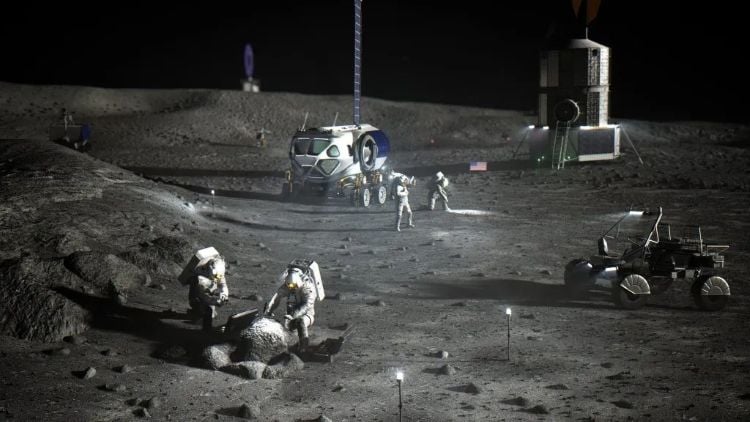A recent study published in Acta Astronautica highlights the potential of thermoelectric generators (TEGs) to improve power efficiency for lunar habitats. Conducted by a team of researchers from the Republic of Korea, the study explores a novel technique aimed at addressing the challenges posed by the Moon’s extreme temperature fluctuations. These findings could significantly impact the planning and development of technologies necessary for deep space human exploration.
The researchers conducted an analysis of how TEG systems could operate effectively under the Moon’s harsh conditions. Temperatures on the lunar surface can vary dramatically, ranging from 121°C (250°F) during the lunar day to -133°C (-208°F) at night. Previous studies have suggested that such drastic temperature changes could enhance the efficiency of TEGs, a concept known as transient-state operation. The primary aim of this research was to evaluate how switching heat storage (HS) systems, referred to as multiple-HS systems, could facilitate this operation in lunar conditions.
Findings from the study revealed that the implementation of a multiple-HS system under lunar conditions could lead to a substantial increase in power generation, with an impressive 48.9 percent boost. This result underscores the potential benefits of leveraging the Moon’s temperature range to enhance the efficiency of TEGs, which could play a crucial role in sustaining long-term lunar habitats.
The study emphasizes the importance of power generation for deep space exploration, particularly for missions aimed at establishing human bases on the Moon and Mars. According to the researchers, “Deep space exploration, including missions such as the establishment of human bases… has garnered significant interest worldwide.” The team notes that a manned lunar base is vital for future missions throughout the solar system and highlights the necessity of sufficient power for such bases.
Alternative power sources, such as Radioisotope Thermoelectric Generators (RTGs), were also discussed, but the researchers caution against their use for long-term missions due to the decay of radioactive isotopes. While RTGs have been successfully utilized on instruments left on the lunar surface by the Apollo missions, and are currently powering NASA’s Curiosity and Perseverance rovers on Mars, their limitations for sustained use on the Moon are clear.
Looking ahead, NASA plans to employ RTGs in its upcoming Dragonfly mission, set to launch in July 2028. The study also touches on the potential of solar and nuclear power as viable energy sources for lunar operations, noting that nuclear fission reactors have previously been proposed for use on the Moon. The relevance of this research is further amplified by NASA’s Artemis program, which aims to establish a long-term human presence on the lunar surface.
The advancement of reliable power sources on the Moon not only facilitates the establishment of human habitats but also supports the practice of in situ resource utilization (ISRU). This approach emphasizes using available resources to sustain missions, thereby reducing reliance on power sources transported from Earth. TEGs, with their ability to harness the Moon’s wide temperature range, represent a promising avenue for achieving this goal.
As humanity continues to strive for long-term settlements beyond Earth, studies like this reflect a growing interest in adapting Earth-based technologies for extraterrestrial environments. The implementation of TEGs could serve as a foundational step in powering sustainable lunar habitats until more advanced systems are developed. The exploration of thermoelectric power generation is set to play a pivotal role in the ongoing journey of deep space exploration, paving the way for future missions to the Moon and beyond.
